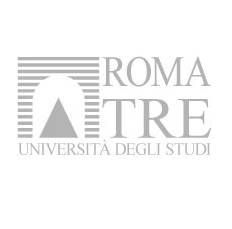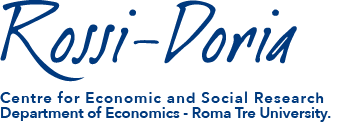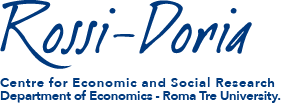
Department of Economics, Roma Tre University
Fellowship co-financed by Bioversity International CGIAR, Department of Economics (Roma Tre University) and Rossi-Doria Centre (Roma Tre University)
Information:
ROMA TRE UNIVERSITY
CALL (English)
BANDO (Italiano)
FOLLOW-UP
For further information, please contact Prof. Luca Salvatici (mail:luca.salvatici@uniroma3.it)
Pursuant to the “Regolamento di Ateneo per gli assegni di ricerca, a public selection process is established to award ONE grant for temporary research fellowship (“assegno di ricerca”) for a period -renewable – of 12 (twelve) months in the Department of Economics:
RESEARCH PROJECT: Conservation of global agriculture and tree biodiversity can contribute toward a sustainable solution to ensure global food and nutrition security despite the anticipated adverse impacts of climate change. Various studies indicate that diversity in food production contributes to diversity in local food availability which, in turn, contributes to health outcomes of individuals. Maintenance of biodiversity on farmer’s fields and landscapes is therefore important in ensuring future availability of nutritious and diverse food, particularly in areas with poor market linkages. Biodiversity conservation on farms and on landscapes also allows plants and animals to undergo natural evolutionary processes which consequentially generate broad genetic variation that is essential for adaptation and for resilience against future threats from pests and diseases.
Maintaining in-situ biodiversity can be viewed as an insurance against future disasters from pests and diseases which could potentially wipe out less heterogeneous populations. Agricultural production systems that maintain biodiversity have been shown to experience less pest and disease damage resulting in lower production costs and lower environmental externalities from chemical crop protection measures. The benefits of biodiversity and the maintenance of diverse rural landscapes can therefore include, among others: access to improved diets more resilient crop and livestock systems improved management of natural resources
Despite these benefits, agricultural biodiversity continues to be eroded as a result of a mismatch, over time and space, between costs and benefits incurred to individuals and society in biodiversity conservation and use. Costs of maintaining diversity generally are incurred by individual landholders or operators and these are costs which occur in real time. The returns from these activities, in contrast, may occur over a long period and may not cover the costs of the operator in the short term. In addition, the benefits can likely be enjoyed not just by the land-owner or operator, but also by the community and the whole world. Since markets are poor at valuing many of the benefits of agricultural biodiversity, market prices tend to underestimate their worth, leading to poor resource allocation decisions, which can result in a lower current or future supply of these benefits than is socially optimal. Unless policies and interventions are implemented to correct for existing market failure, there may be little incentive to maintain agricultural biodiversity at socially optimal levels. Therefore it is important to have a better understanding of different benefits which can result from the maintenance of agricultural biodiversity and be able to estimate these quantitatively in economic terms. Modelling tools can help identify the potential benefits and different options that can be used to address the market failure. Toward this objective, Bioversity International is initiating a program to develop a set of geospatial analytic tools to estimate the value of benefits enjoyed by society through the enhancement and/or safeguarding of agriculture and tree biodiversity.
APPLICANT PROFILE: The overall objective of the post-doctoral research activity will be to work with Roma Tre University and Bioversity International to develop a CGE model prototype for a selected geography to enable estimating the value to society of safeguarding agricultural biodiversity. This will likely involve incorporating into the model key ecosystem services which are affected by biodiversity conservation. These may include pest/disease risks, pollination, soil quality, and water use efficiency. The model should allow examining trade-offs in terms of benefits to society between increasing crop productivity, nutrition outcomes and ecosystem services. This post-doctoral position is designed to work with other related efforts focused on developing functional relationships between agricultural management and ecosystem services and incorporate these relationships in a CGE model prototype. While this will be a joint effort of Roma Tre University and Bioversity International, the work is expected to draw upon many other ongoing work streams of CGIAR Research Programs (CRPs.)
Background and experiences Required:
• Ph.D. (or the advancement to candidacy for a PhD) in agricultural and applied economics, economics or another closely related field in economics
• Experience in CGE modelling
• Fluency in English (both written and oral)
• Evidence of ability to initiate and complete research characterized by originality, creativity and innovation.
• Excellent interpersonal skills and the ability to work in a multi-cultural environment
Desirable:
– Familiarity with models such as GTAP and MIRAGE
– Strong statistical/econometric modelling and programming skills
– Evidence of a track record in elaborating peer-reviewed publications
– Knowledge about GIS
Interesting candidates may be interviewed through skype conference call.
GROSS AMOUNT (paid in monthly installments): € 23.350,00


